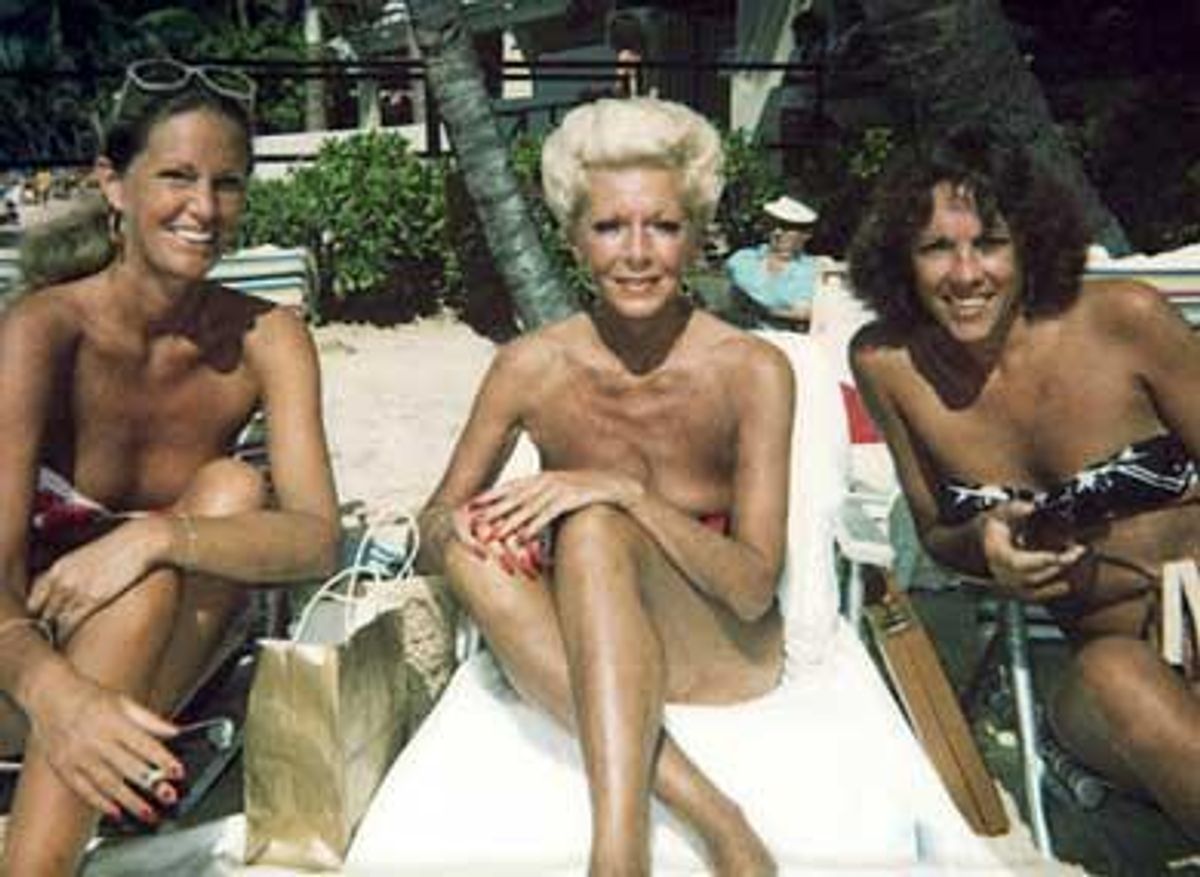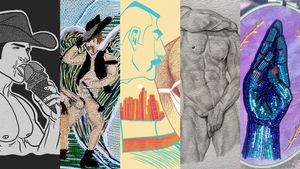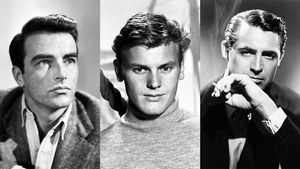Cheryl
Crane's life is like a classic Hollywood movie. Even
when it swerves wildly off track every now and then,
ultimately it heads right back toward a happy ending.
Crane is the lesbian daughter of the late Lana Turner,
one of film's most iconic women. In her new memoir, Lana:
The Memories, The Myths, The Movies, Crane
reveals untold stories of her life with her mother and
publishes never-before-seen photographs. The book
reveals Crane as a strong woman too -- someone
who endured a life shrouded by melodrama only to
emerge an LGBT advocate and ultimate survivor.
Crane's
father, Stephen Crane -- Turner's second spouse
-- was the famed restaurateur who put Luau in
Beverly Hills on the map in the 1950s. He and Turner
were already divorced when Cheryl was born in 1943 --
they later remarried and divorced again -- but she remained
extremely close to both of them. And as a daughter of
the Hollywood elite, she led a privileged life. Judy
Garland and Liza Minnelli lived next door; Art
Linkletter and Bing Crosby were also neighbors. Frank
Sinatra was called "Uncle Frank." She
was even given the proverbial pony on one of her
birthdays.
But all of that
couldn't keep the emotional storm clouds from blowing
in -- and staying put -- for more than a decade.
In 1953, Crane
was sexually molested by her stepfather, onetime
Tarzan portrayer Lex Barker. Several years later,
when Turner discovered the truth, Crane says that her mother
held a gun to Barker's head and sent him
packing. But even with Barker gone, Crane was
unsettled. She ran away when she was 13.
"I think I
rebelled against the whole fishbowl life that we were
living," she revealed on Larry King Live
in 2001. "You know, every move was fodder for
somebody ... and I resented it. I just wanted to be
Jane Doe."
Crane was found
in downtown Los Angeles and immediately sent back home.
Afterward, life became better -- for a while. Then
everything went south. Suddenly, Crane was the central
figure in an incident that shook Hollywood, spawned
endless headlines, and found her confined to a
detention cell for killing her mother's boyfriend at
the time, mobster Johnny Stompanato.
On the night of
Good Friday, 1958, Crane was in her bedroom when she
overheard Stompanato arguing with her mother down the hall.
Turner, attempting to sever her ties to Stompanato,
wanted to kick him out of the house, Crane recalls.
The argument escalated and Stompanato began a series
of vicious verbal attacks. When Crane overheard the man
threatening her mother's life -- he also said he
would harm Crane and her maternal grandmother, Mildred
Frances Cowan -- the 14-year-old panicked.
The next thing
she knew she was downstairs in the kitchen reaching for a
knife. She made her way back upstairs and found herself
standing several feet from the door to her
mother's bedroom. Moments later Stompanato
suddenly emerged, his hand high in the air. Frightened,
Crane took a step forward and stabbed him. Unbeknownst
to Crane, Stompanato's hand was raised because
he was carrying clothes on hangers over his shoulder.
"I was
hysterical," Crane says of the event. "It was
a great shock."
Afterward, she
was put in custody for three and a half weeks until a jury
ruled that the incident was justifiable homicide. From
there, Crane was whisked away to a home for problem
girls. In 1960 she escaped to live with her
grandmother.
"I
don't think one ever could forget something like that
completely," says Crane of the stabbing, her
voice drifting off. "But it's not a
driving force in my life. It's something, thankfully,
I lived through, with the help of both of my parents.
It makes me who I am today but it's not
something I dwell on."
Crane documented
the incident in her 1988 bestseller Detour: A Hollywood
Story, but 20 years later, she addresses it again
in the new memoir, coauthored with Cindy De La Hoz
(Lucy at the Movies and Marilyn Monroe:
Platinum Fox). She refers to the tragedy as
"The Paragraph."
"'The Paragraph' became our euphemism
for the events in 1958 that made mother and me
notorious the world over," she writes in the book.
But the authors' true mission is to present
Turner in a new light through rare photographs and
personal vignettes. The result is one of the season's
more engaging reads, a coffee table-size tome that cleverly
balances the surreal with the sublime as it gently
moves along a creative catwalk loaded with lovers,
liars, and hundreds of classic Hollywood stars.
"Every
section adds layers to who she was, as an actress, mother,
daughter, lover, friend, and idol to legions of movie
fans," Crane says. "We tried to show the
real person and to fill in a lot of the things that
were wondered about in public over the years, but with a
humorous slant. Because the one thing about mother was
that she didn't like anyone that didn't
get the joke."
Turner, who died
at the age of 74 in 1995, was forever idolized after
being discovered at the age of 16 by Hollywood
Reporter publisher Billy Wilkerson while she was sipping
a Coke at a soda shop in Beverly Hills. When asked by
Wilkerson if she wanted to be in motion pictures,
Turner said, according to Crane's account, "I
don't know. I have to ask my mother."
Turner fans may
appreciate Crane's frothy nuggets throughout the
book. Like Carrie Bradshaw after her, the star was a
bona fide "shoe girl." At one time she
had accumulated 698 pairs. Meanwhile, a 20-foot jewelry
vault, built in her home closet, was where she stored
valuable diamonds, pearls, and emeralds.
The memoir really
shines, though, when Crane narrows her focus on more
intimate details. Her mother was shy, for instance, and of
her film debut in 1937's They Won't
Forget -- a fitting title -- Crane writes that her
mother "was absolutely mortified and wanted to
crawl under the seat" when she saw herself.
But that was the
film that found Turner, a 36B, wearing what would become
the most talked-about formfitting sweater in cinematic
history. She was immediately christened the
"Sweater Girl," a moniker Crane says her
mother abhorred, having once quipped, "I have done
more for the sweater than the sheep, the silkworm, or
the Yale football team."
Still, it only
fueled Turner's ride toward superstardom. By the mid
1940s, she was starring opposite Clark Gable in several
films, and her unabashed portrayal of an adulteress in
The Postman Always Rings Twice (1946),
costarring John Garfield, sent her celebrity soaring
higher. The legend's steamy personal exploits, much
like the case with today's celebrities,
generated the most buzz. In a lengthy chapter dubbed
"Lanamours," Crane chronicles the
"many" men in Turner's life.
"I think
men are exciting," Turner is quoted as saying in
book, "and the gal who denies that men are
exciting is either a lady with no corpuscles or a
statue." Later Crane writes, "Marrying was a
sincere desire for her. Simply put: when she fell in
love, she married." Turner was married eight
times, twice to Crane's father.
Of her own
homosexuality, Crane says she knew she was gay when she was
8 and came out to her mother at the age of 12.
"It
wasn't a great surprise," she notes.
"When I first told my mother she gave me the
usual, 'Oh, darling, I had a crush on my gym teacher
too; you'll outgrow it.' And I was,
'No, I don't think so.' And I
didn't 'outgrow' it. It was
always that way."
Crane, now in her
60s, is a real estate agent and lives with her partner
of 37 years, Jocelyn "Josh" LeRoy, in Palm
Springs. Their first encounter is tres
Hollywood, in fact. They met at a party, underneath a
pool table with Marlon Brando. (Apparently Brando
enjoyed having deep discussions under the billiards.) In
time, the author has proven to be a true advocate for
gay rights, getting the LGBT ball rolling (a bit)
faster in 1985.
"Nobody
[at that time] had come out happily and said, 'I am
gay, I am in a relationship,'" she says.
"A few people had been drug out of the closet,
but Jocelyn and I were never in the closet. I was really one
of the first [in Hollywood circles] to come out --
with Bryant Gumbel on the Today show -- and the
reaction, all in all, from that point on, was 99%
positive."
More interesting,
perhaps, may be the fact that friend John Waters
officiated over Crane's commitment ceremony at Pia
Zadora's home in 1992. Today, she says both she
and LeRoy both strongly opposed Prop. 8 and plan to
"officially" marry soon. "She's
my best friend, and we have an awful lot of fun
together," Crane muses.
Beyond the tragic
events that generated headlines in the 1950s, Crane
also survived a mastectomy in 1998. "I had a lot of
inner strength; I still do. It's what propped
me up all these years. I learned I was capable of
handling more than I thought I was. We're very strong
people -- my family. "We know how to survive
when we're knocked down. My mother certainly
had that and I think I do too."


















































































